Last updated on May 13, 2019
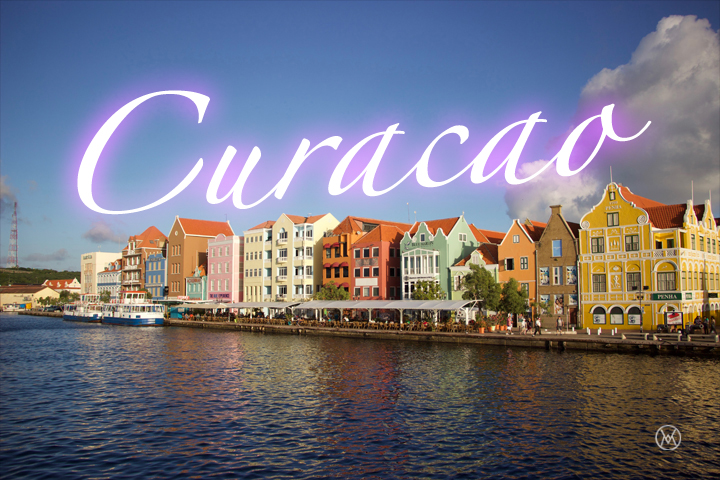
When I tell people I was going to Curacao, most of the responses I got were “cool, where is it?”I was looking for a beach vacation. I wanted to soak in the sun, get a nice tan, and let my toes breath freely one more time before winter really kicks in. I have longed to visit Aruba, but the price tag kept me hesitating. As I look further into the Caribbean, the colorful buildings in Curacao called out to me. So in early December, I packed my bags and snorkeling gear, dived into the blue blue ocean.
Curacao is “not yet” a popular travel destination yet (thankfully, at least not to Americans). It is often overlooked because of it’s more famous sister island- Aruba. Along with Aruba and Bonaire, these three made up the ABC islands, all part of the Dutch Antilles in the Caribbean Sea . Among the three, Curacao is actually the biggest. East to Aruba, right above Venezuela.
The main city in Curacao is Willemstad, which is also a major cruise port. There are not a lot of options flying into Curacao from New York. JetBlue has direct services (4.5 hours) twice a week; AA offers connecting services there every day, transferring in Miami. Look closely when booking the flight, some of the traveling time were more than 17 hours. As if it was begging you to spend overnight in Miami.
The only airport in Curacao is on the north coast of the island, about half an hour away from Willemstad. The airport is new but very small. However, it has very up-to-date technology, even newer than JFK, never mind LGA. If you are holding an EU passport, you can zip through immigration using the electronic gate very quickly. If you are not come from EU, unfortunately, you will be lining up behind the only two booths. Currently the whole structure is smaller than any average shopping mall in the USA. Obviously, it is expanding. A large part of the airport compound is still in construction, but there was no chaos. Even with lack of signage, it is surprisingly orderly. There is no one trying to grab visitors or badgering for business like in Cancun. I figured out my way to the taxi stand, negotiated a price, and hopped in. (sorry, no Lyft or Uber yet).
Fun Fact: Most Curacaoan speaks 4 languages. WOW! Right? While Dutch is the official language, most people learned Spanish and English in school. The fourth is Papiamentu which is the curacao’s version of the Creole language. 4! Impressive!!!!
My Cab lady Noeltella speaks all four languages, and she was super nice and friendly. She gave me a few pointers where to visit and where to eat. Also told me a few major neighborhood activities that I should not missed, like Wednesday Cabana night and Thursday Punda Vibe. As we drove closer to the city, we rode across the Queen Juliana Bridge. It crosses the north side of St. Ana’s bay, and gives a stunning overlook of Willemstad. Noeltella told me that Queen Juliana Bridge is the tallest bridge in the Caribbean. We cannot exactly stop in the middle of the bridge to take pictures, but she slowed down enough for me to take in my first look of the pastel colored buildings by the harbor.
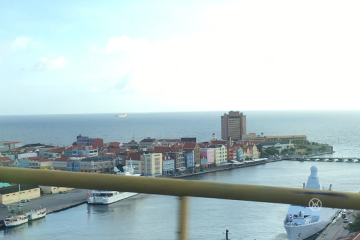
The most known neighborhoods in Willemstad are Punda and Otrabanda. They mean the “point” and the “other point”, literally. The two are connected by the famous Queen Emma Bridge. They are considered the historical area in Curacao. I chose to stay right outside of Punda at a cozy hotel/ hostel in the Pietermaai neighborhood. It is cheaper but within comfortable walking distance to the historical Willemstad. My hotel, like Curacao’s iconic buildings by the bay, is painted in bright blue and orange. After I settled in, it was already evening. I shed my winter layers and set out to wander the city.
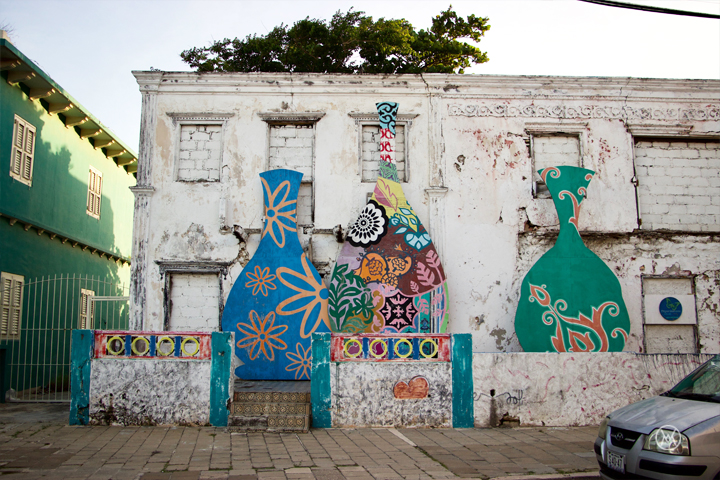
I stood on Queen Emma Bridge watch the sun slowly set on St. Ana’s bay. The sky and ocean slowly turned from orange to purple to deep blue. Then the lights shining on both sides of the bay. It was magical.
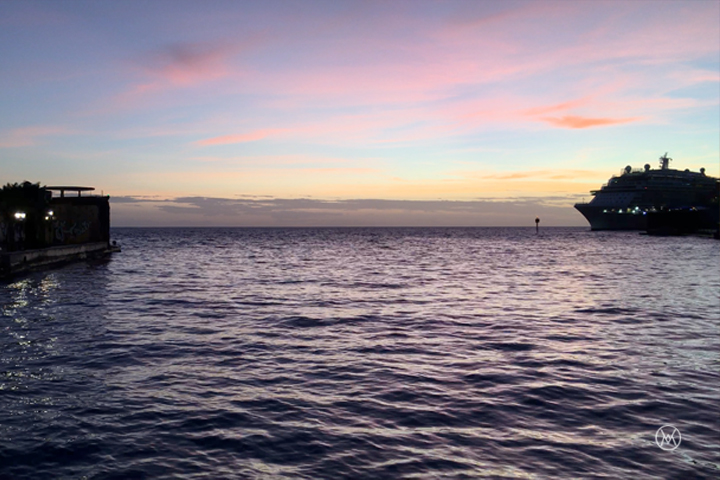
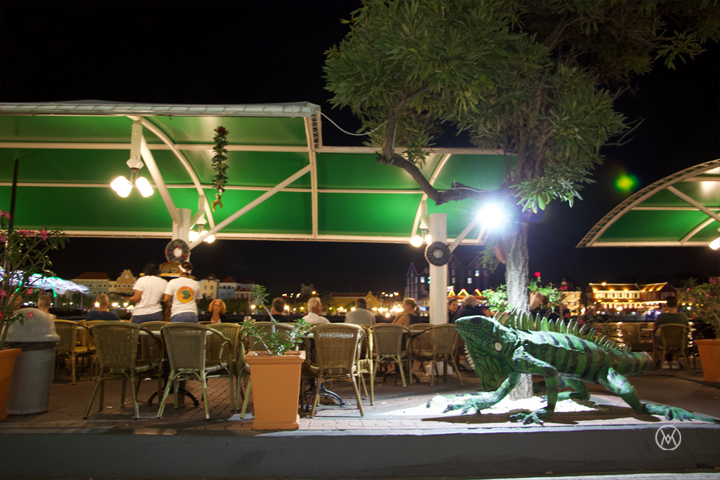
First meal in town. I had read somewhere that there are places that serves iguana. Feeling adventurous, I walked around and looked for iguana on the menu. After strolling through several restaurant, I failed to spot any grill or fried iguana. I wandered into Iguana Café thinking that would be a sure bet. Another misguided tourist mistake. Iguana café does not serve iguana. It is just another “international flavors” restaurant that serves burgers and fries. I was disappointed and it was getting late, I decided to continue my search of iguana on another day. I crossed the bridge to Otrabanda and grab dinner at Restaurant & Café Gouverneur De Rouville.
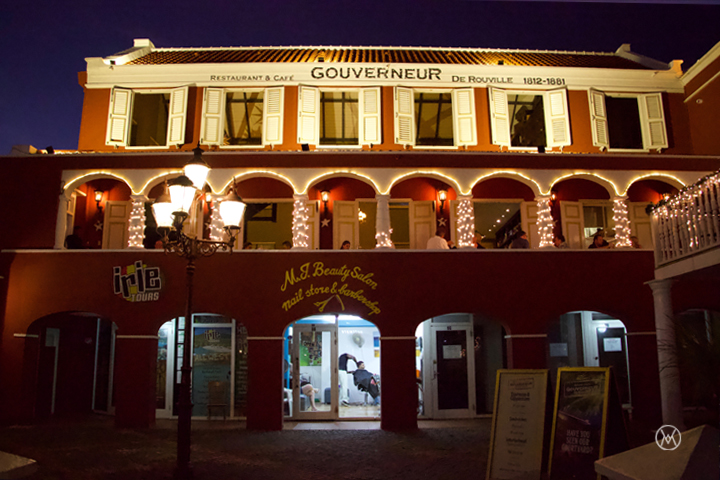
Restaurant & Café Gouverneur De Rouville is a colonial style mansion now converted into a restaurant. I ordered the Keshi Yena, the national dish of Curacao. It is a layered cheese and meat dish. Kind of like a lasagna but without the pasta. I don’t really like all that cheese. At Gouverneur De Rouville, they added prune, which made this dish a little brighter but it was still too heavy for my taste. They also serve local specialties such as Karni Stoba (Beef Stew) or grilled whole snapper. I regrettably pushed it aside, and nibbled on the fried potato. Just like in Amsterdam, pomme frites always comes on the side with mayo.
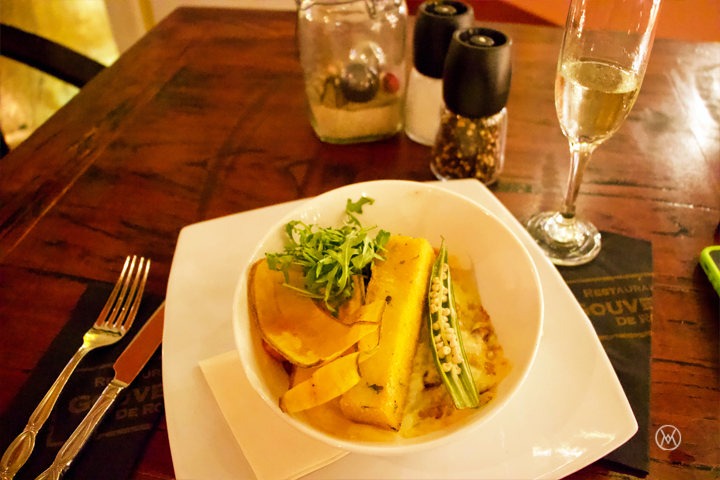
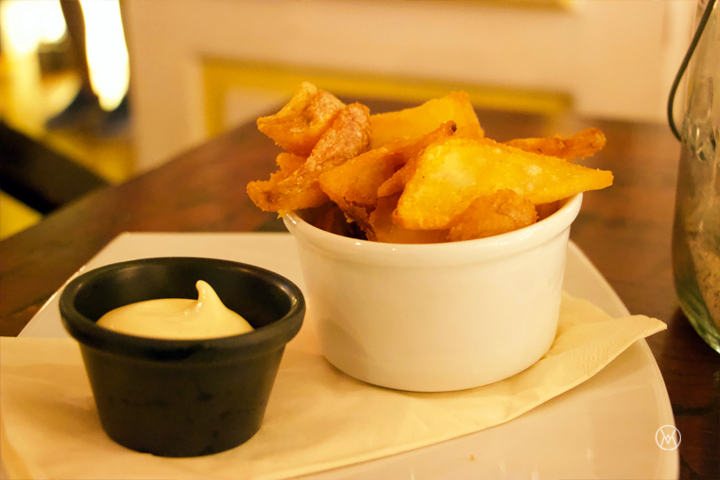
On the balcony overlooking Handelskade, I watched the Queen Emma Bridge swung back and forth to let traffic passed through. As the night fall, warm Caribbean wind blew; I savored this delightful view with a glass of wine.
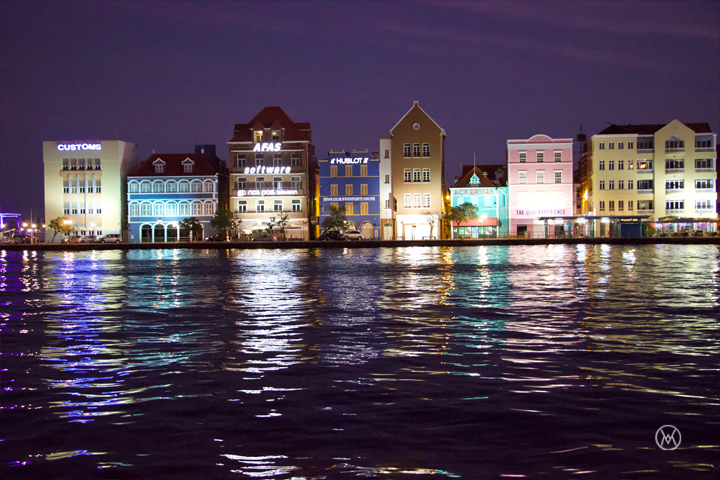
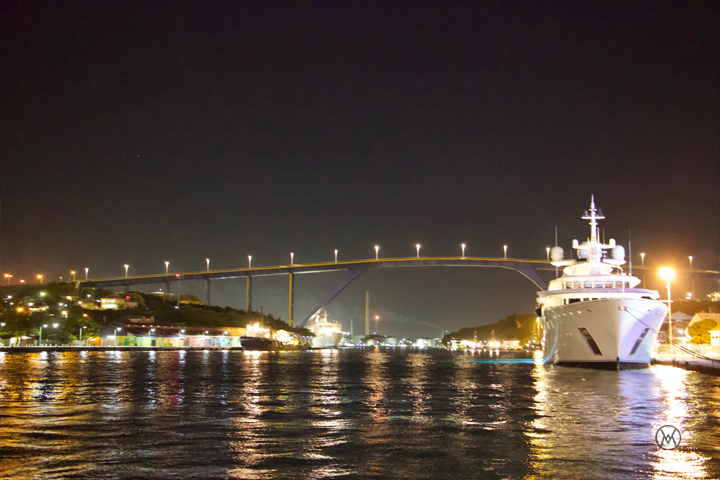
If you were going to visit Curacao, I strongly urge you to take a trip to Klein Curacao. Known for its beautiful diving/snorkeling site, Klein (means little) Curacao is about 2 hours (15 miles) sail off the Southeast coast of the big island. The whole island is protected wetland, totally uninhabited. There is nothing on the island except a lighthouse and several huts. Going to Klein Curacao is an all-day event. Leaves early morning then back to Willemstad around 5:30pm. Many tour companies offer day trip to Klein Curacao. They are easily found on TripAdvisor or Viator (I just learned that they are actually the same company). I went with the Mermaid Boat Trip simply because it advertised that it has the ONLY facility on the island. Also the scuba diving instructor I booked suggested it.
The tour came and picked me up at 6am in a mini-van. We drove about 20 minutes to fishermen’s pier and climbed on-board the Mermaid. There were about 40-50 of us. With sleepy eyes, we set sail on a beautiful morning.
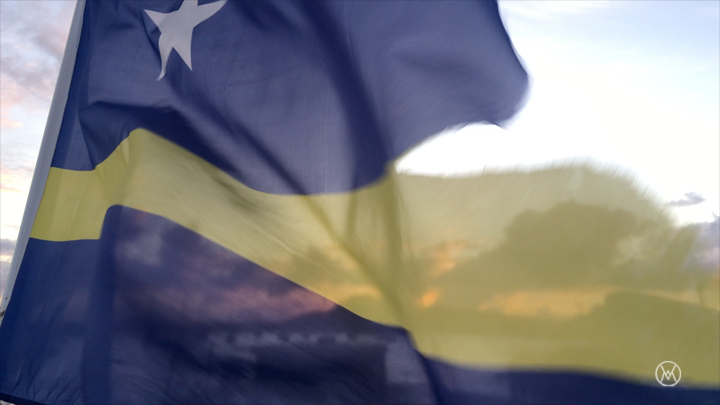
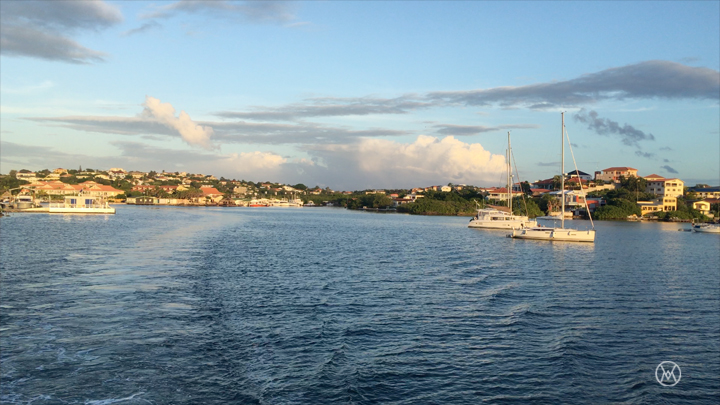
I read about the choppy water to the island, but experience no sea sick at all. I was a little worry since I had not had breakfast yet (it was 6am!), but the Mermaid was quite sturdy going. In fact, I suggested everyone to come with empty stomach, because the Mermaid serves breakfast once we got to Klein Curacao.
It was almost 9am as the Mermaid approach Klein Curacao. Immediately we spotted the lighthouse, standing alone. Further away we saw the ship wrecked site.
What is even more enticing was the water. Crystal clear. Even from the deck, we can see fishes in the water clearly!
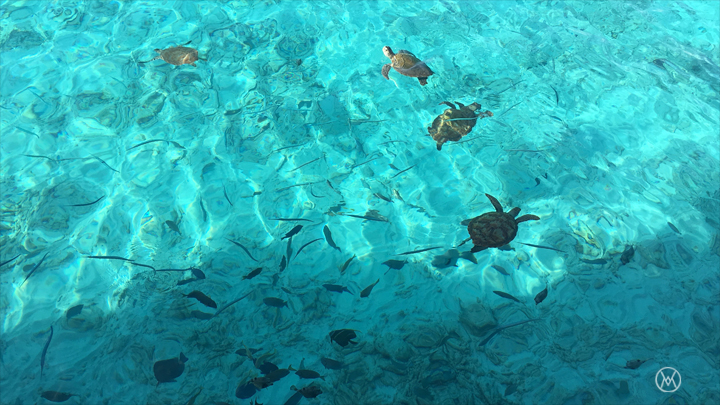
There is no dock on the island, we have to hop into little speedboat to get ashore. The captain also suggested that we can jump in the water and swim. From the distance we were “docked”, it was totally attemptable, several brave souls did dived right in. Me? I was not brave enough.
Once ashore, I quickly kicked off my flip flops and dip my toes in water. Although we are in the forever warm Caribbean, it is still before 9am. Water is a bit chilly. But the sand, soft and fine, I felt like I was stepping on sponge. THIS IS PARADISE!!!
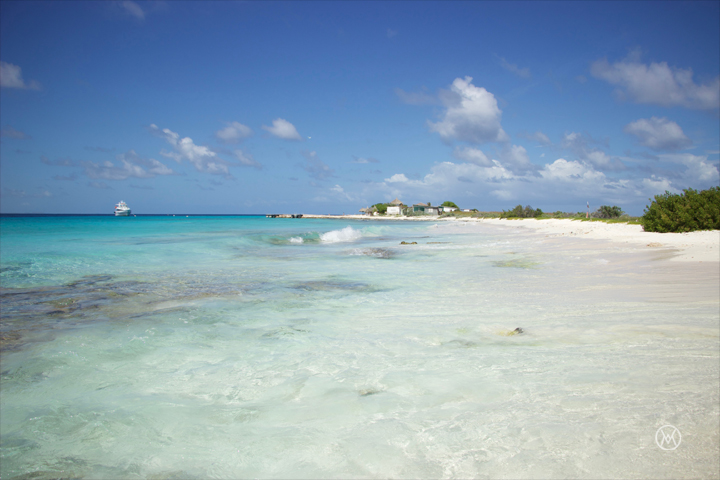
So the Mermaid Tour does have the ONLY beach house on the island. There are several huts down the beach, but the Mermaid clearly has better facilities. It has cabanas, beach chairs, a dining hall with a huge grill (where the crew cooked lunch for us), and BATHROOM!
“Ding ding ding”. It was announced breakfast is served. There is a bell tower where we were, and every time the bell rang means there is food. Breakfast was simple ham or turkey and cheese on rolls, tomato and lettuce on the side, with unlimited juices (Sorry for the lack of visual). Nothing fancy but food is not the priority here.
I decided to do a little exploring before the sun gets too hot. The lighthouse is about 15-20 minutes’ walk. I followed the only path to the pink-ish structure. Nothing grows on this island, except marsh and cactus. Along the way, I found various sharp and size of dead coral embedded in the land.
Clearly this island was once all under water.
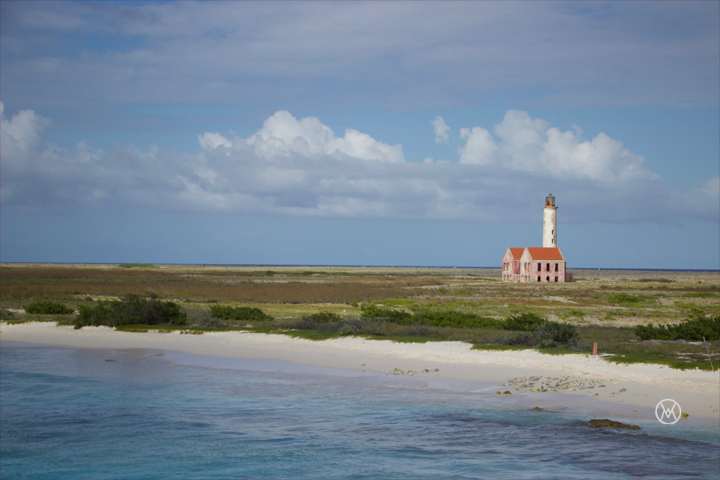
The lighthouse is a 2 stories structure, with the tower in the middle. The lighthouse is not manned, power by solar energy. The whole building felt abandoned, as if time has forgotten this little place. Exterior paint is peeling off because of corrosion; most of the flooring inside is gone. The spiral staircase to the top of the tower seems unsecured and was only wide enough to fit one person at a time. It was worth to climb the spiral narrow staircase, because the view is un-comparable from the top. The island is flat, there is nothing obstructing the view. I can see as far as the land ends.
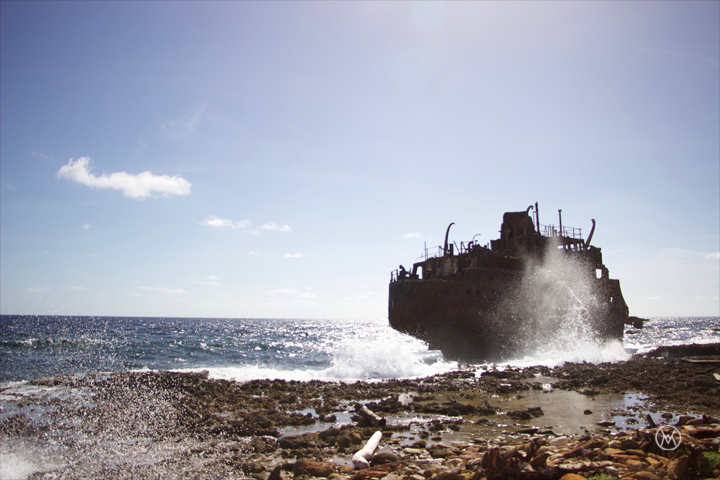
The shipwrecks are about 15 minutes’ walk from the lighthouse. Water is much rougher on the north shore where the shipwrecks are. Water over there is not swimmable. Current is too strong, and beach is far too rocky. No wonder the shipwrecks got washed up on this side of the island. There is a tanker and a yard, sitting not far from each other. On the way walking there, there were numerous rusted machinery parts scattered around. As I starred at the tanker, I couldn’t help but imagining Captain Jack Sparrow tumbling on the beach with a bottle of rum.
Back on south shore. I spent the rest of my day in the water. Floating around looking for sea turtles and other creatures. Water was warm and calm, and fishes were around everywhere. It was easy to lose track of time, or lose myself, in this paradise.
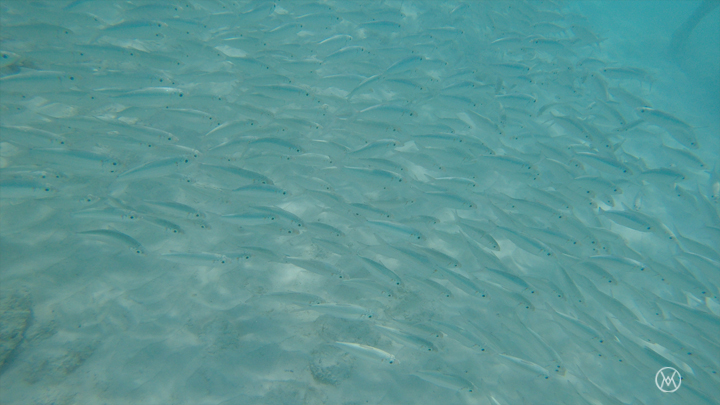
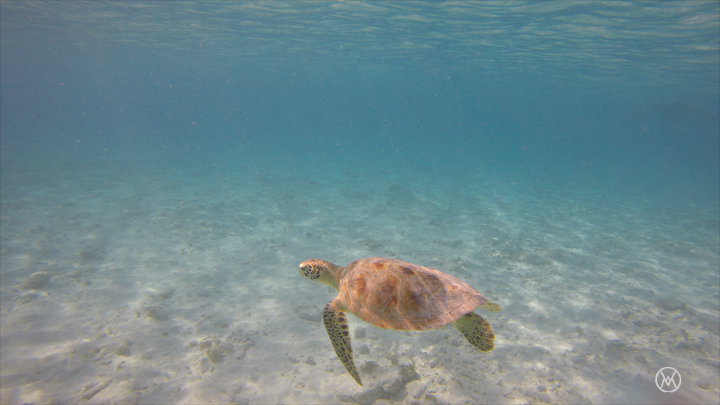
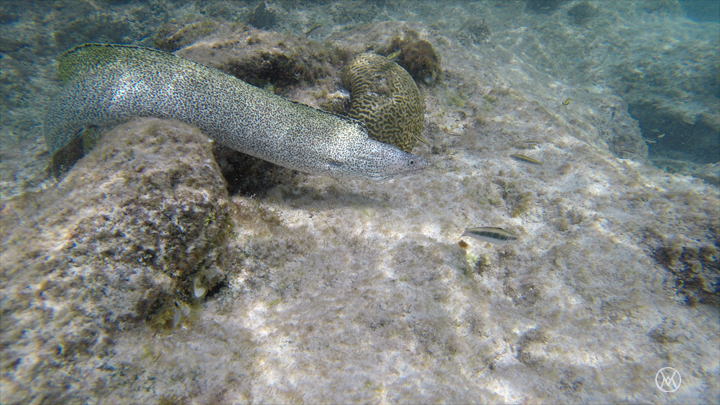
Then the bell rang.
Lunch was an “all you can eat” grilled ribs and chicken, with salad and fruit. As I waited in line for food, the I noticed movements on the ground in the back corner of the dining hall. There was an unbelievable scene. Hermit crabs, hundreds of them, rooming around. You can almost hear them walk/crawl. A whole colony of hermit crabs. “Crack crack crack”. This is their turf, their Homeland. They look like “Davy Jones” from the Pirates of the Caribbean…. I always thought Davy Jones was an octopus, maybe he is actually a giant hermit crab….
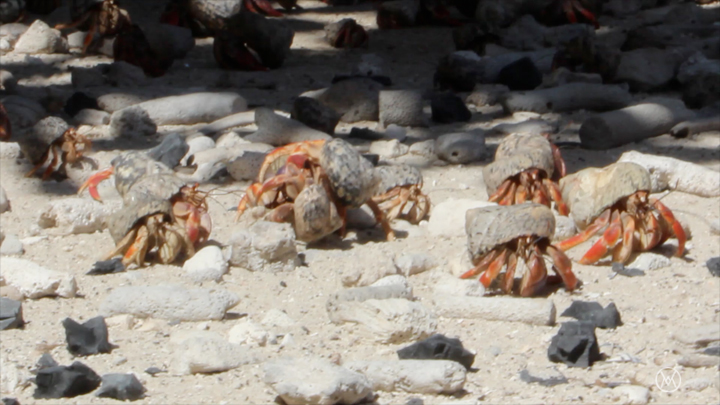
Not only hermit crabs are free roaming here. Also blue lizards. Lizards and crabs, two completely different creatures, from different worlds. Here, they mingle, they are on top of each other, in one another’s way. But no fighting, not for food, not for turf. They are at ease, in peace, roam freely, and sharing a home together. We humans should take notes.
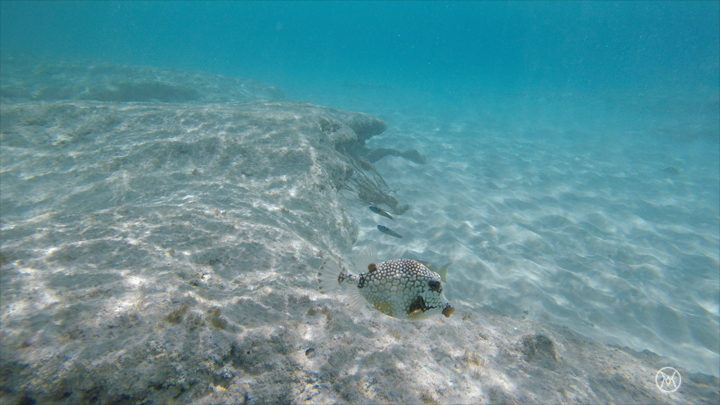
Then it was time to leave…..
This was an amazing experience and a wonderful day of beach and sun. Door to door service with breakfast and lunch, unlimited juice and water. (There’s alcohol too, pay at the end of the trip bases on an honor system. No one is really counting how much you drink.) The one thing I was very impressed with was the zero amount of trash on the beach. Clearly, the crew take great care of the environment. Since this is an inhabitant island, what we brought here must leave with us. I observed the crew collected gallons of waste back to the boat and cleaned up as much as possible. I sincerely hope all visitors will continue to behave and limiting our footprints here to ensure this little paradise stay the way it is, unpolluted, and undisturbed.
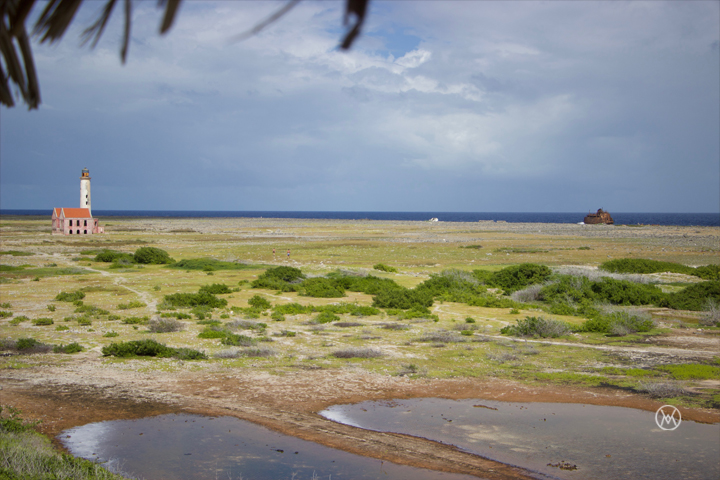
Back on main island, it was chow time again. In my mind it only make sense to have seafood for dinner after a day on the beach. Via the wisdom of yelp, i found Fishalicious, a higher end seafood restaurant on the outskirts of Pietermaai, They labeled it as a modern “international” cuisine. It is almost hidden in a residential neighborhood. Fishalicious felt like a private villa. Traditional Dutch colonial building in blue, with an iron gate on the side, opening into the courtyard. It was a warm night, I chose to sit in the courtyard. My waitress recommended fried sprats “salad” and grilled local corvina.
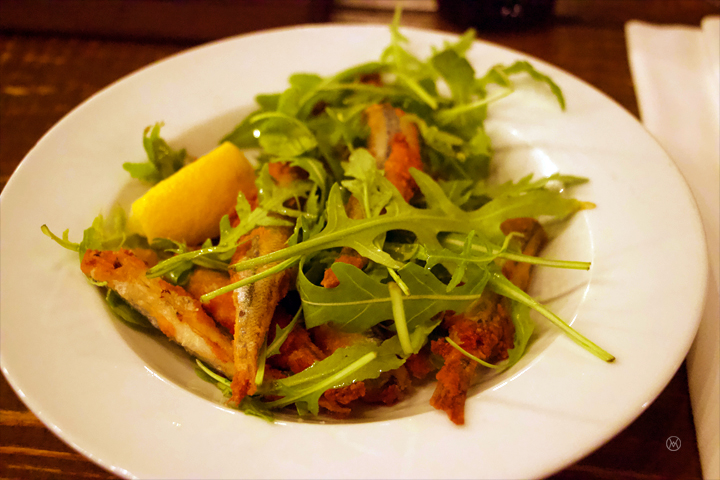
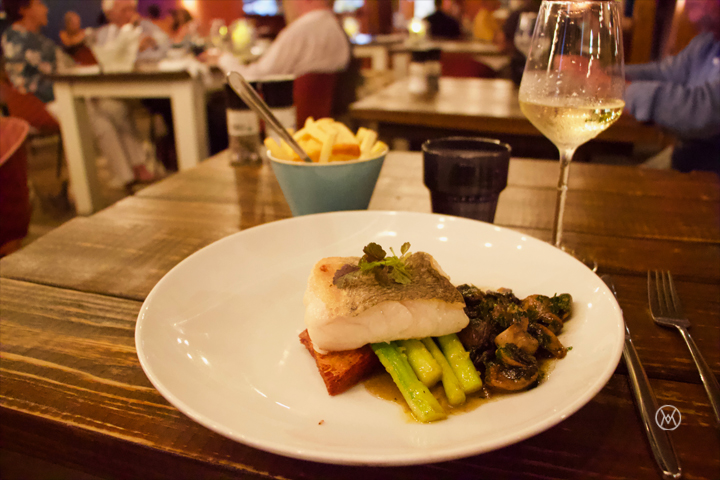
For an island that grows nothing, and everything is imported. These asparagus were perfectly crisp!!!!
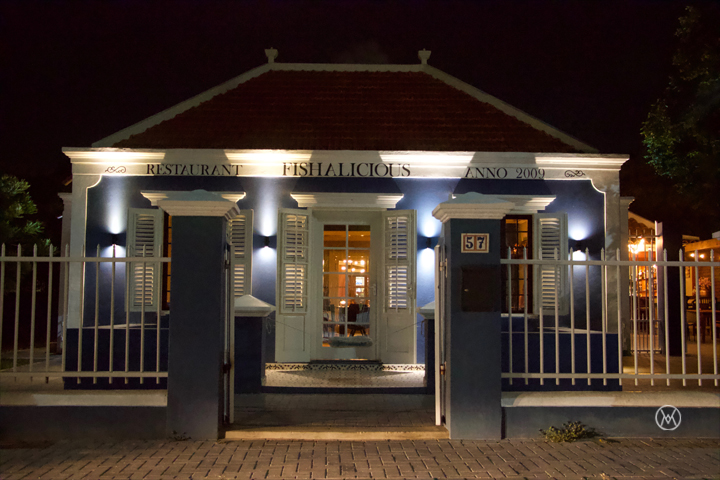
The day after Klein Curacao was a painful day, as I clearly did not put enough sunblock lotion yesterday, I suffered from severe sunburn. My whole body was itchy and burning. Majority of my skin had turned lobster red. This was my own fault. I forgot that i could still get sunburnt in the water. I love the sun and beach, but this Caribbean sun love me back even more. So folks, remember, reapply, reapply and reapply. It is no joke.
I stopped by a breakfast place nearby before starting another day tour. The main Pietermaai area where most of the boutique hotels are, is a whole row of colorful buildings, housing cozy restaurants, and quiet cafes. Among them is the Scubalodge, specialized in scuba tour!
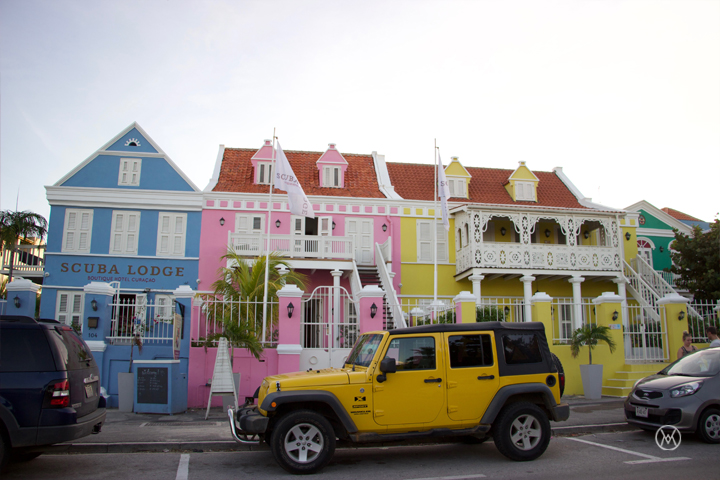
9am sharp, I hopped on my “taxi” tour.
Found this tour on Viator. Includes Hato caves, several scenic stops and an afternoon at a “local” beach. I could have explore all these places on my own, if only i rent a car (which my hotel does offer for a day rate), I opted to leave the driving to someone else.
The tour picked me up in a taxi van. After picking me up, we stopped by the mega dock to pick up our last two tour-mates. On the way, rain started pouring. Must be my luck. According to travel guides I read, Curaçao only has 32 inches of rain annually. 32! This morning must have contributed at least 3”.
Our first stop was the salt flat where flamingos are known to be seen. The rain slowed down a bit when we arrive, just enough for us to step off the van and take picture for about 5 minutes.
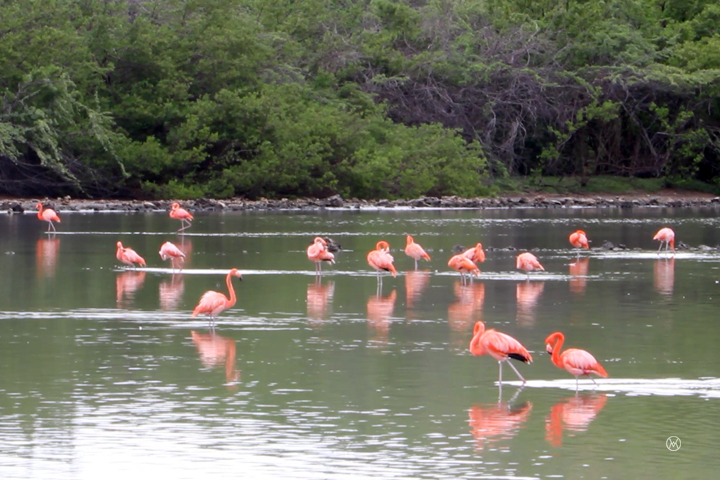
The tour continue onto the north coast as the rain started coming down again. We arrived at Hato cave a little pass 10am. Hato cave is the only commercialized cavern in Curacao, at least that is what the tour guide kept telling us. Our local cave-guide is a very energetic person. He kept trying to crack jokes, but not so much information. One thing he kept emphasizing was “NO PICTURES”.
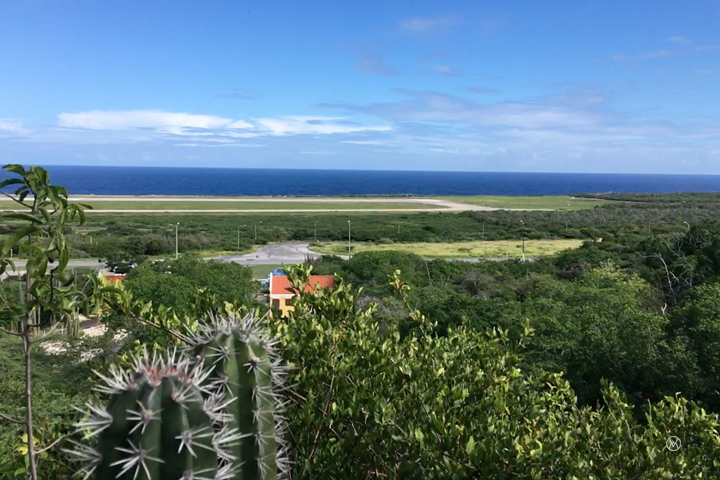
He said there is only one designated area where pictures are allow, because the flashes from camera could destroy the fungi on the stones, and change its nature. Completely understood.
Unfortunately, not all tourist are interested in complying, or being smart enough to not use flash. Hence, our tour guide had to repeat again and again, and again. To some level, this cycle ruined the experience. The area that is opened to visitors is not that big. Only one narrow path in, and same way out.
Major formation “room” were just enough to stand 20 people. We were a group of 30. It was crowded. Since there were no room to move around, we need to keep moving, made the tour feel rushed. Air ventilation is nonexistent in the cave, the air is stuffy, and at times, it was hard to breath.
Tour guide said this is especially unique here, because Hato Cave is actually above ground. While other caverns are holes in the ground, so they stay cool year-around; Hato Cave is a cave on a hillside. When the sun hit right above, it is warm and stuffy inside. I highly suggest to visit the cave in early morning. Asides from stone formations, bats are another fascinating “feature” of the cave. Hundreds of them lives here, and they are highly visible.
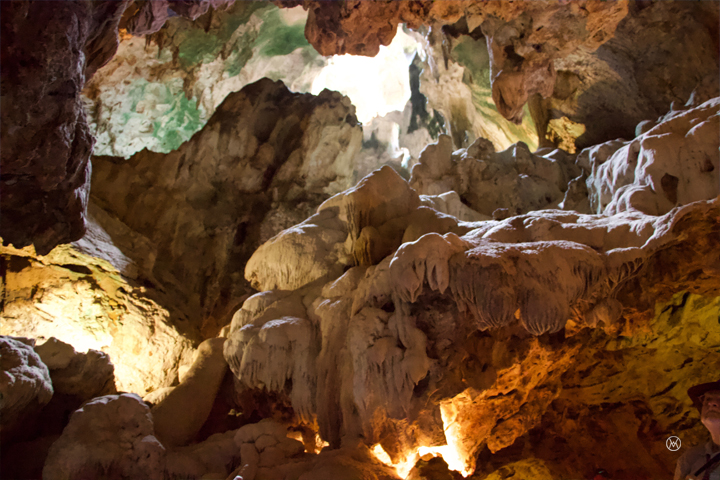
Not on the itinerary was Chobolobo, but we made a stop anyway on this rainy morning.
Curaçao is the home of Curacao — the beautiful blue liquor, and Chobolobo is the factory of this orange flavor alcohol. I honestly thought the blue came from some sort of natural ingredients which made Curacao unique. As it turns out, it was just food coloring….. hmmmm Regardless, I still brought several bottles of this colored liquor, they are just so pretty.
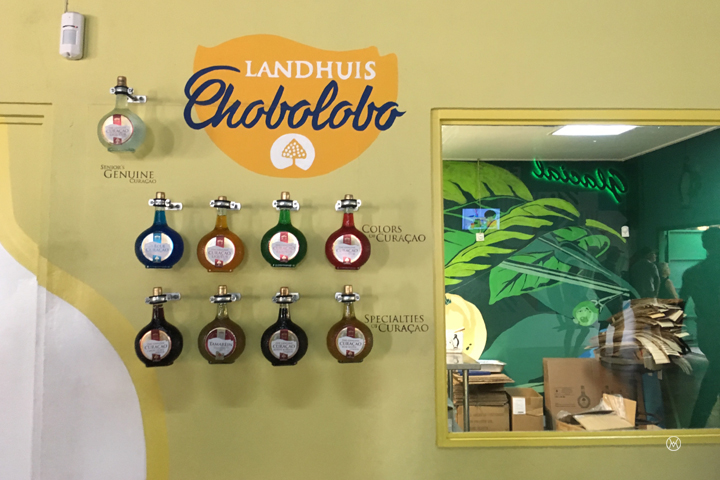
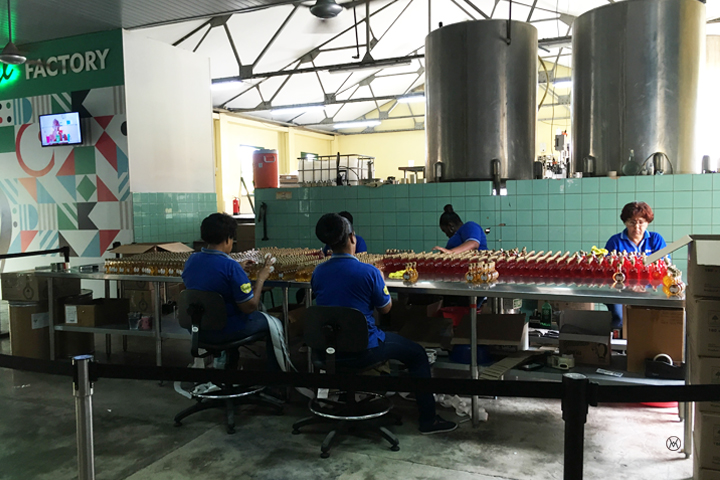
Inside Chobolobo, there is a comprehensive display of how Curacao was developed, and a slight glimpse of Curaçao’s history. When the Dutch first arrived on this island, they tried to grow orange tree here. But Curaçao being a giant volcano rock is not ideal for agriculture. The orange grown here turned out to be green and bitter instead. Not suitable to be consumed, but perfect for alcohol when fermented. To this day, Curacao is still bottled here in this factory. After the informational part, there came the fun drinking part. There are different flavors of Curacao, a tasting is included. Then there is a cocktail bar in the courtyard, serving beautiful mixed drinks.
The last stop of the tour was Cabana Beach on the east shore of Curaçao. It is “advertised” as local beach, but truly is a commercialized beach with a man-made cove. It really cannot be call local because the beach charge an entrance fee, meaning locals would not come here. My tour includes the entrance fee, but everything else is extra. Beach chair, umbrella, towels, even changing room use …. all “come with” extra $ $$. And there’s a bar and two restaurants serving “international” fare. I was quite disappointed because it lack the experience I was aiming for. But I get it. Most tourists want amenities. Since I was still suffering from sunburnt, I hid under shade and watch iguanas walked by, with loud pop music and drunk tourist making splashes. For more “authentic” local beach experience, head to west shore.
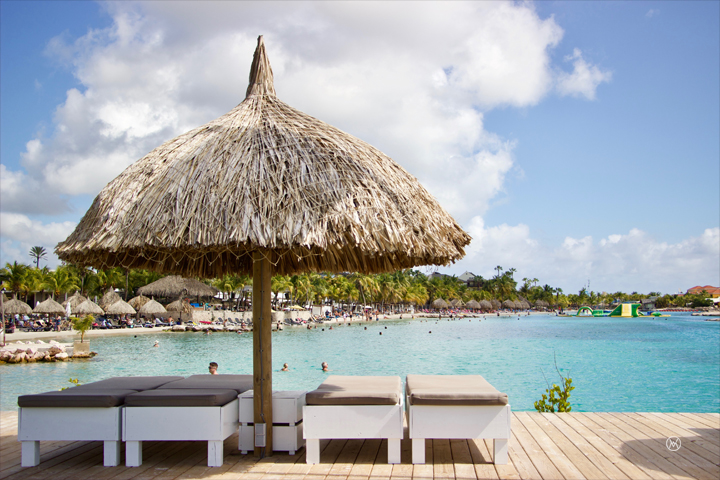
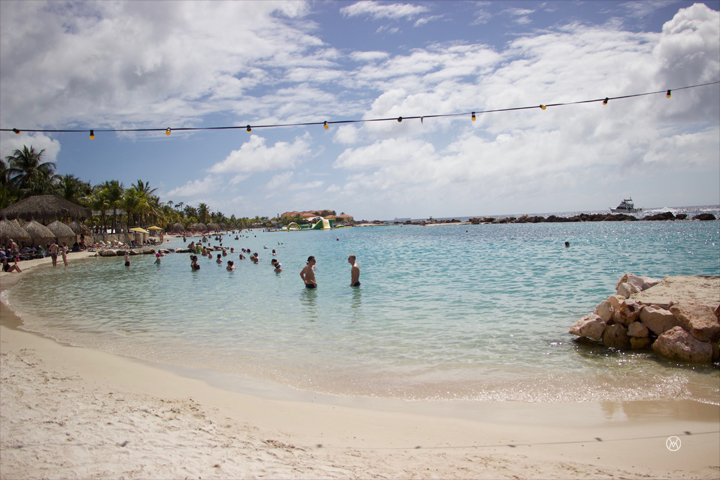
What I didn’t do but should have on this trip was to explore the West shore of the island. There’s a national park there, offers hiking trails and amazing cliff side views. Unfortunately weather did not permits. On this last full day of my trip. It was drizzling all morning. Instead, I stayed in town, and visited some historical sites.
Willemstad is very walkable. The floating market is only about 7 minutes from my hotel. It used to be a major produce market, and very busy in the morning. Curacao rely heavily on imported produces from neighboring island/ countries, the main one being Venezuela. In early morning, fishermans display their daily caught, boats of fruits and vegetables would arrived from Venezuela and dock at the floating market. But Venezuela has been unstable lately, politically. As an act of sanctions, the Curacao government closed its broader for such daily trade. The lack of traffic made the floating market seemed lonely. There were only three or four boats docked here the days I visited.
The nearby Ronde Markt also lost its energy as well (The Ole Market-Plasa Bieu was under renovation). Only a few tourist souvenirs stalls remains. On the second floor of the market, that is where the locals have lunch. While I failed in my search for grilled iguana, I had the best Lamunchi and goat stew here. The menu at these food stalls are very similar. I sat down next to some local workers, and ordered what they were having. One of them ordered a whole fried fish, snapper I think. But the portion was too big for my appetite. Lamunchi was utterly refreshing. It is like lemonade but made with lime. Goat stew was flavorful and hearty. I chatted up my fellow “eater”, and learned that iguana is no longer served in the city. To experience such local delicacies I would have to travel west. West, seems to be the direction where everything I want to experience… but this meal was properly the most memorable meal I had in curacao. To this day, I still think about that goat stew all the time.
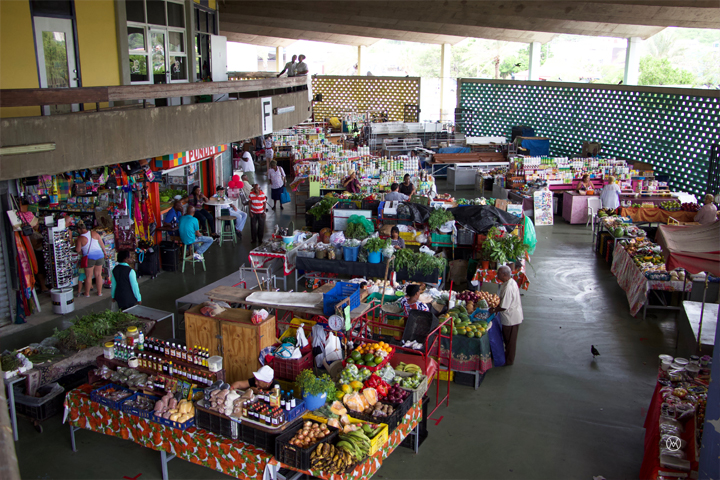
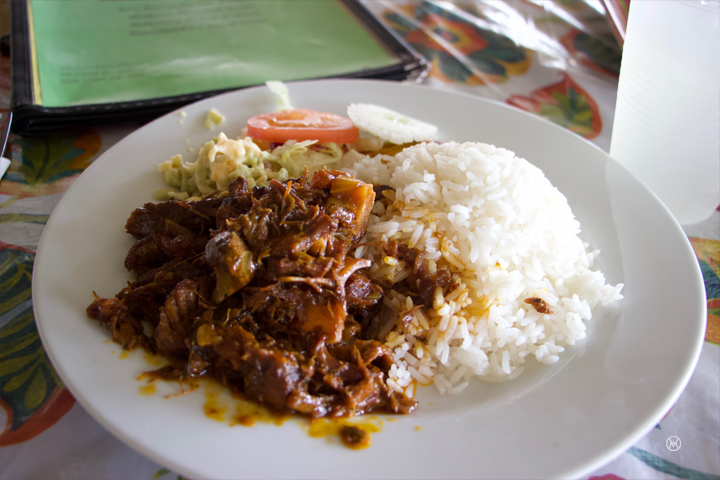
It was still rainly when I headed inside Milkve Israel Emanuel Synagogue. The butter-yellow building was quiet although in the middle of the shopping district. It is not only the oldest Synagogue in the Western Hemisphere, it is historically significant among Jewish. Here I learned that Curacao played a major part of sheltering Jewish refugees during the World War II. It also became a major hub in connection of Jewish refugees in the Western Hemisphere.
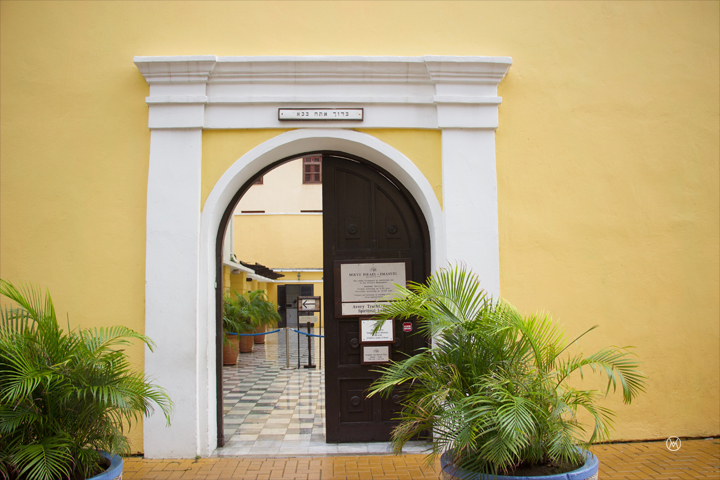
As I existed the Synagogue, the sky went dark and about to pour. I ducked into a little cafe across the street – Wanderu, and so glad i did. This little whimsical cafe also double as a gallery. The pieces are playful yet elegant. Coffee was great, and the passion fruit tart was fantastic!
It was at this cafe, I confirmed that “rain” is a rare thing in Curacao. And pouring rain is consider non- existence. The friendly staffs at the cafe even took out their phone to film the pouring rain.
As the rain slow down and my coffee cup bottoms up, I continued my journey. My next stop dug deep into the history of Curacao. Or should I say the dark history of Curacao – Kura Hulanda.
Across Queen Emma bridge to Otrobanda, Kura Hulanda is a museum featuring African art, history, and an extensive collection of the slave trade. The museum is attached to the same named resort.
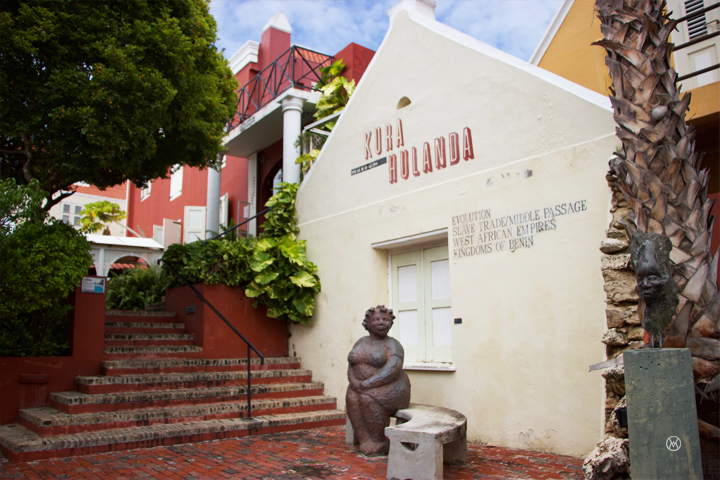
To understand Curacao, one cannot ignore the brutal history of slave trade. Doesn’t matter if it were the Dutch or the British or the Americans, Curacao was a hub for the dark trade. Here I read more about the horrific details of the 10 weeks journey from Africa to Curacao, where a large portion of passengers did not survive the passage. Also on display are a huge collection of artifacts of torturing tools, drawings and pictures of the dark pass. Having visited the slave museum in Charleston not too long ago, I would say the collection here is far more extensive and complete. While the slave museum in Charleston focus on the slave trade itself (selling, trading), Kura Hulanda gave me a more in-depth insight of the journey, the livelihood of the people. From two different perspectives, this complete the circle for me. I’m so glad that I spend time at Kura Hulanda, it educated me of human race’s ugly past. This is definitely a MUST SEE when in Curacao. To fully take in everything in the museum, I suggest to allow 2-3 hours at least.
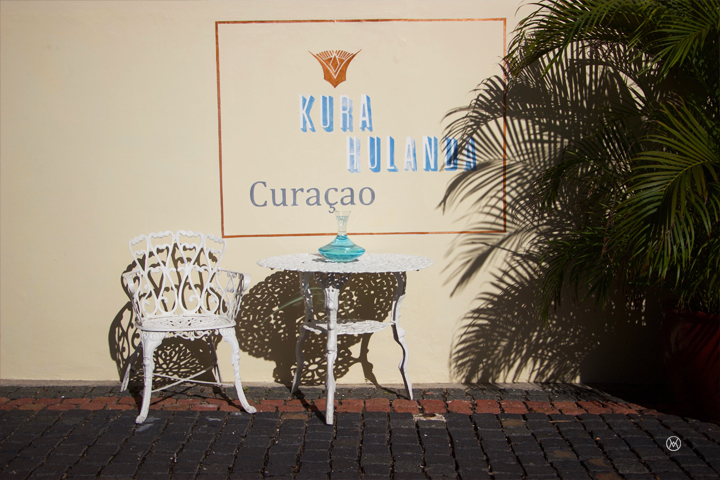
Out from the past, back to Curacao’s present. Away from the touristy neighborhood. I wandered upon some very impressive street art. In fact, even in Willemstad, there were evidence of blooming street art, scattered around town. But in this “industrial/residential” neighborhood, the drawing board is bigger, the art pieces are more massive.
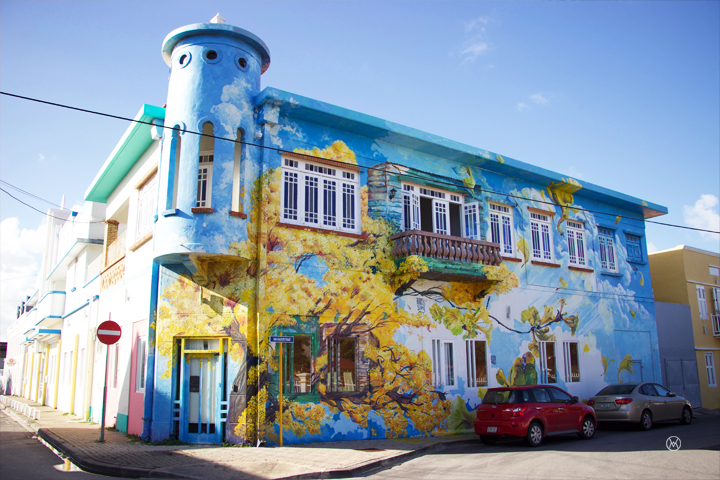
If I have no set destination, I am not lost, right?
I stumbled upon a neighborhood filled with colors. Every little house is identical, yet different color. How adorable! They are even more vibrant than those at Saint Anna bay. From what I learnt, these are government housing. And they are rent-to-own. So a working class family can eventually be able afford to have a roof they can call their own. Wonderful European policy.
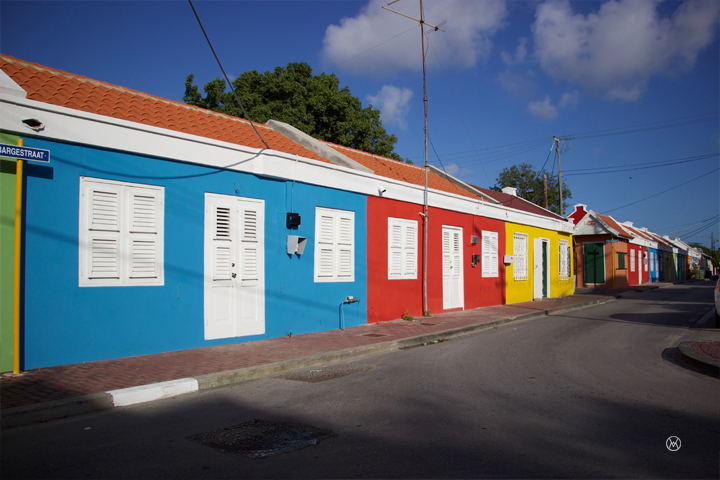
Some other things I learned on this trip is that although Curacao is its own country now, the Dutch still support the people as if they were their own. Curacao people enjoy full health benefit from the Dutch.
One of my cabbies told me the story about his sister got cancer but there were no surgeon on the island whom can operate on her, so the government flew her all the way to the Amsterdam to get her the surgery and the treatment she needed. All expenses paid, pre and post-op included. Now she is cancer-free. The government of USA should really take notes. This is how we should be treating people.
Another experience that can’t be missed in Curacao is Punda vibes.
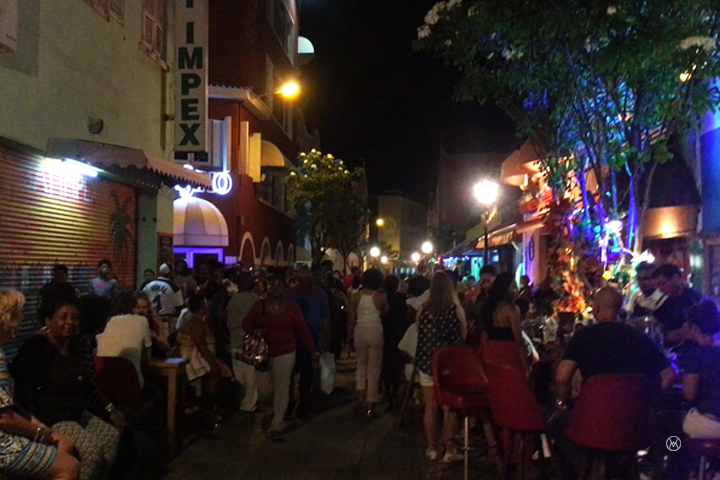
very Thursday night after 9pm in Willemstad, the party is on. Pre-disclosure, on any other day in Willemstad, businesses close petty early. Other than restaurants or bars, everything closes before 8pm. But on Thursday, everything stays open. It is a carnival in Punta. Music pouring out from bars onto the streets. locals, tourists, all mingling, dancing in the streets. In one of the alleys, there was even a DJ spinning live. The town is alive. I don’t know if it is a regular thing, but at the town square, there was an outdoor fashion show. It seems to be the “it” thing in town as all the locals gathered around center stage. With a couple drinks in hand, I navigated through every corner of Punta, and dance the night away.
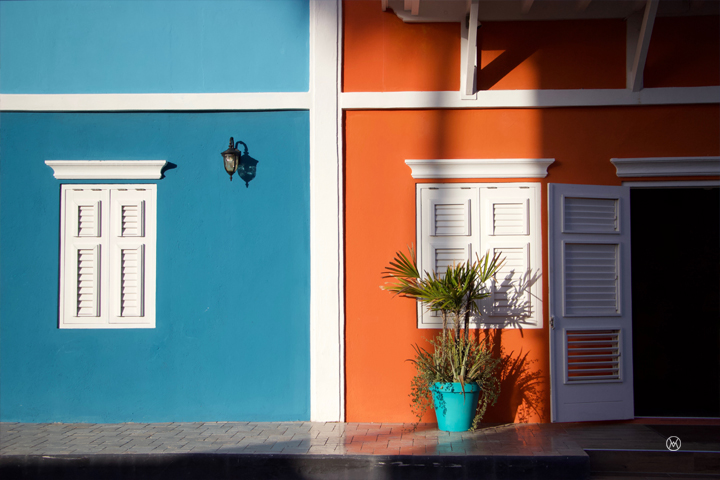
I am totally in love with this little island. The sun, the beaches, the people and the culture. I totally get it, it is a vacation mindset. But I truly feel that i can live (retried) here. For now, I am already plotting my return to this blue paradise.
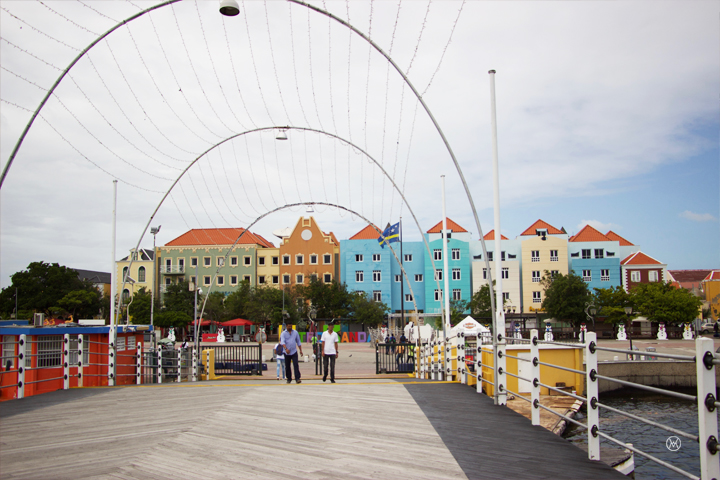
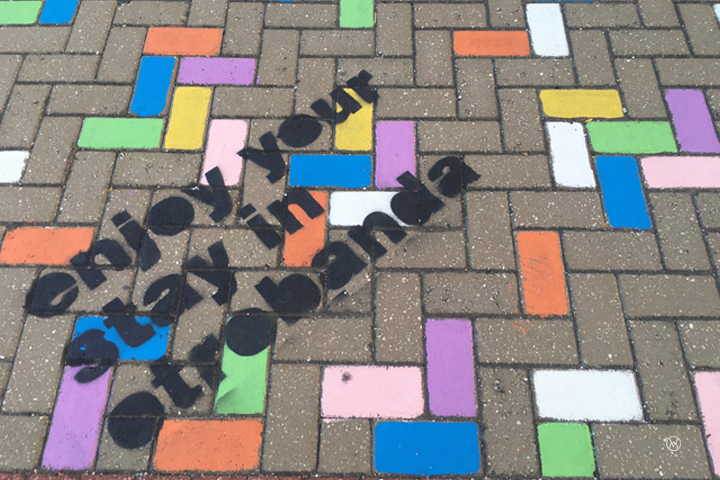
See you again soon Curacao, my blue paradise.
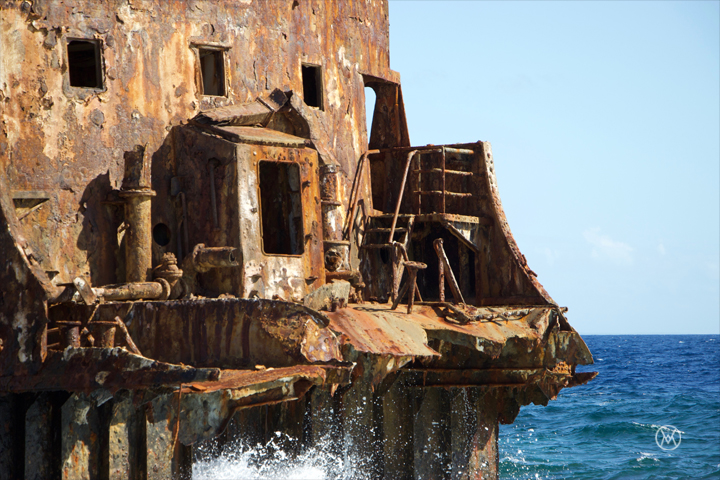

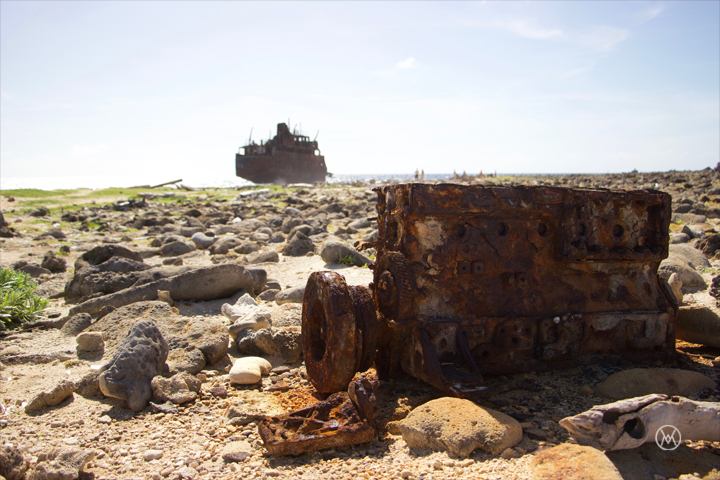
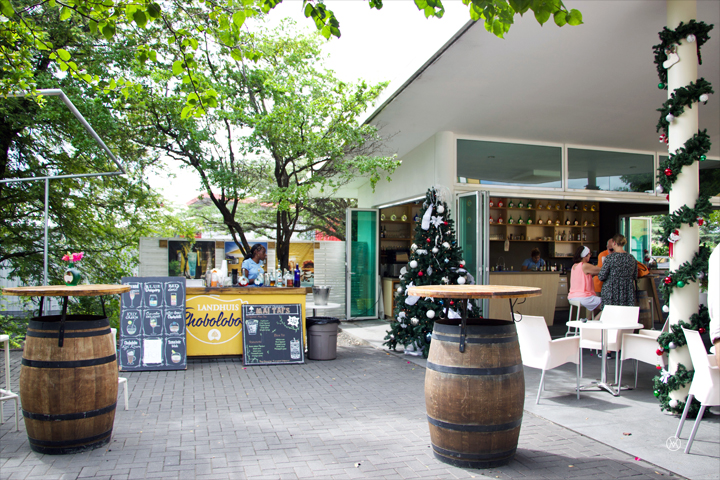
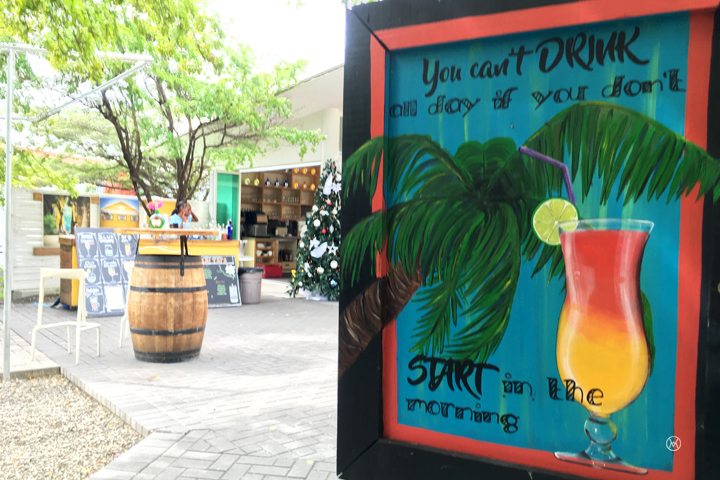
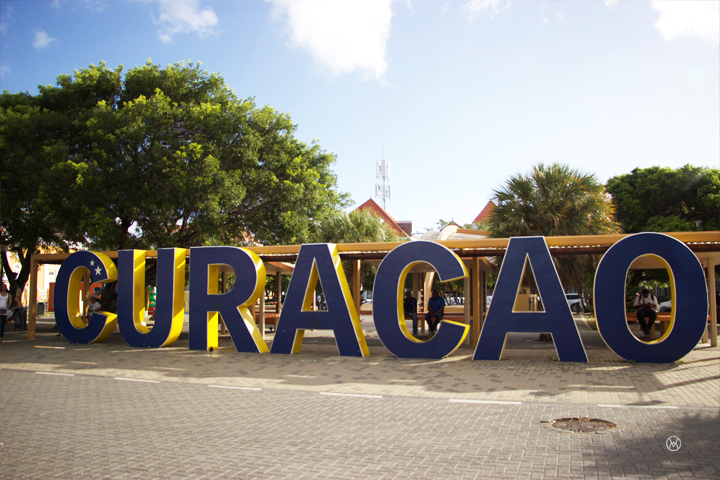
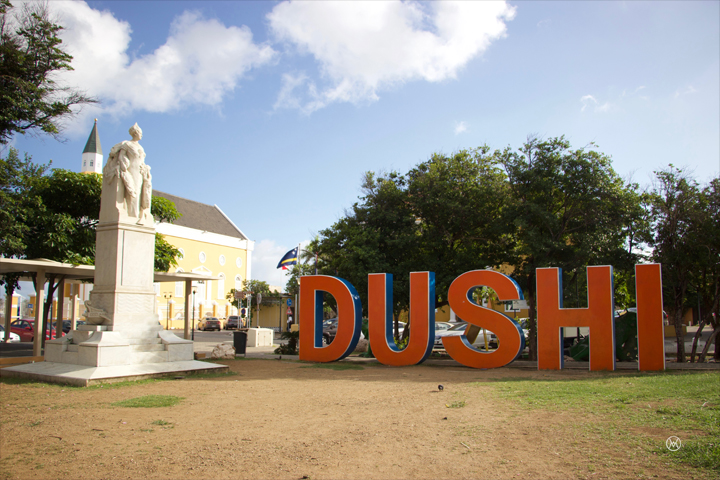
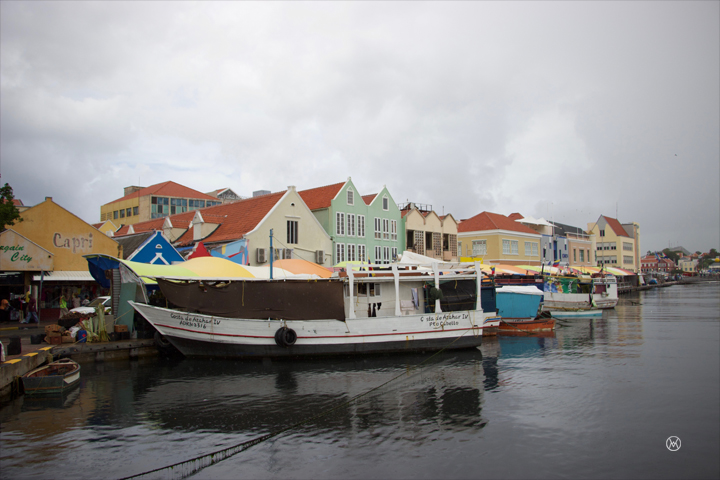
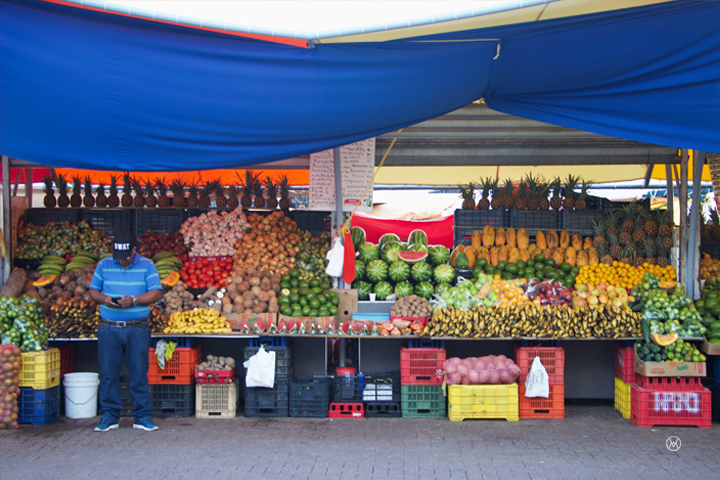
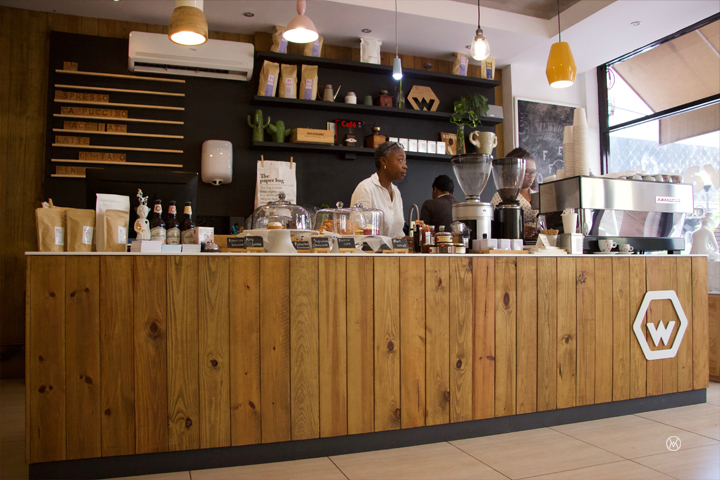

Be First to Comment